Research
Overview
In general, I'm interested in understanding interdisciplinary questions with computational methods and tools from applied math.
Current Projects
Analogue Hawking Radiation in Hydraulic Jumps
This project is conducted under the supervision of Professor Nigel Goldenfeld. Black holes. Rivers. How can they be brought together? In fact, when the velocity of a river's flow exceeds the velocity of surface waves, an analogue event horizon is created. Some experiments have been conducted in carefully designed "water black holes" in laboratory and an analogue Hawking effect has been measured. In my research, I will try to investigate whether similar effect can be found in natural "water black holes", such as tidal bores. This is a brand new project so not much can be said yet. Hopefully something interesting awaits me.
Automatic Image Analysis with Neural Networks
This project is conducted in collaboration with Professor Andrew Leakey in the Department of Plant Biology. In an attempt to understand crops' responses and adaptation to climate change, his group run an experiment in which carbon dioxide is pumped over a field. To study the phenotypic changes to the root system, images are taken from micro-rhizotrons, fiber optic cameras inserted in pipes near the root system of interest. The hundreds of thousands resulting images are impossible to be processed by hand. Traditional computer vision techniques have been applied by my predecessor to automate the process, yet the varying quality of the images yields unsatisfactory accuracy. A sample of roots is shown below.
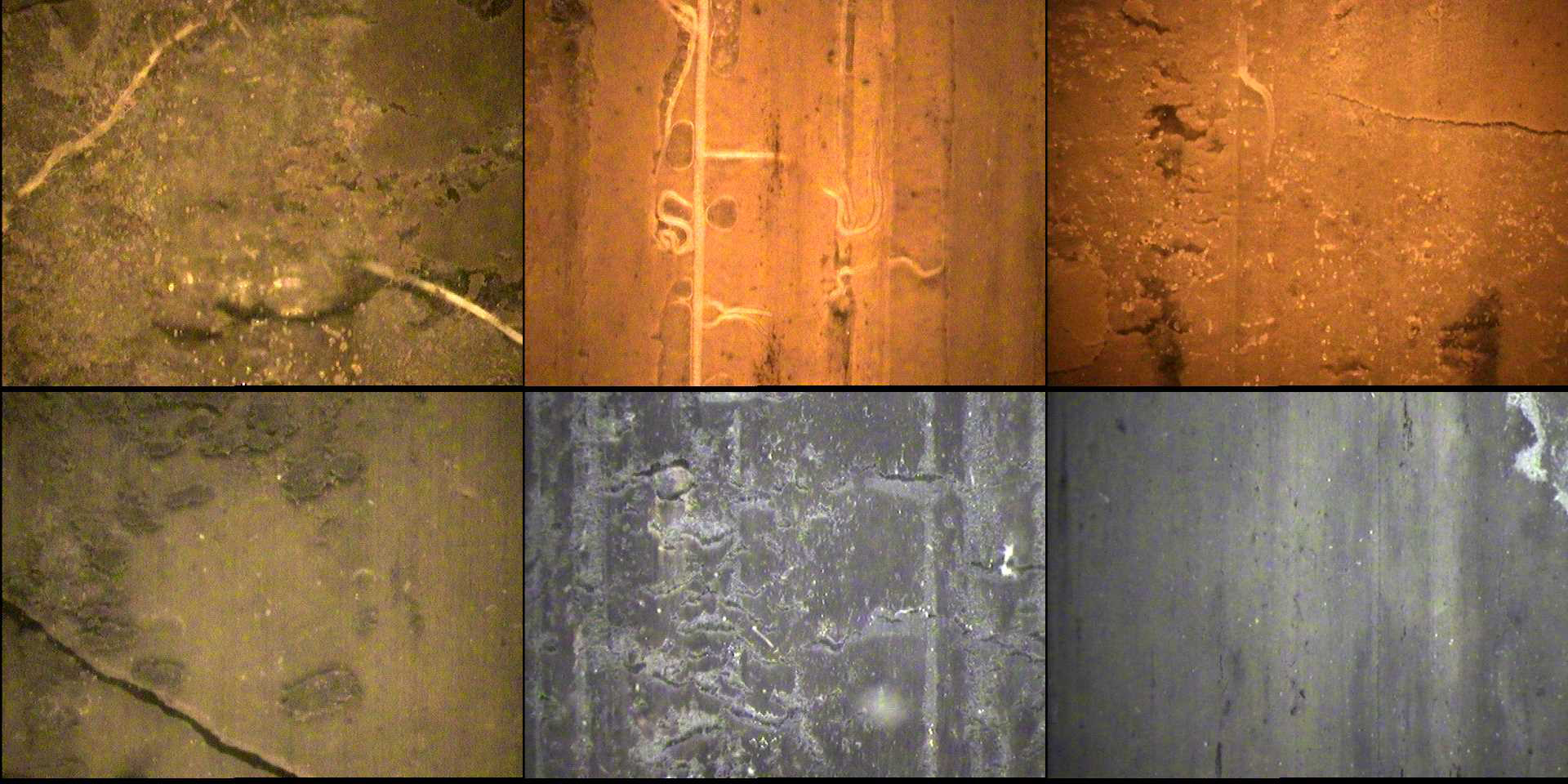
The areas and lengths of roots have been labeled by human experts in tens of thousands of images prior to my involvement. To fully utilize the data, I trained a deep convolutional neural network with an architecture known as AlexNet. The network is capable of outputting the area and length of a root system in an image, thus providing useful information about the biomass of roots. The amount of time needed to process the entire dataset is now shortened to several seconds on a machine equipped with a GPU.
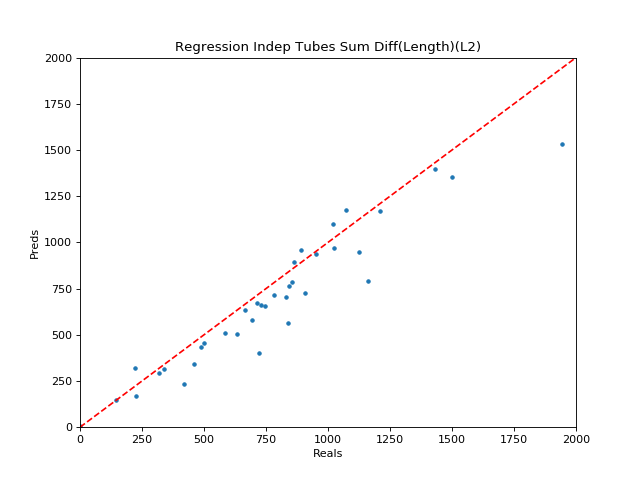
Above is a comparison between human results and program outputs. Each data point is the total length of roots next to a single pipe, which corresponds to about 100 images. The dashed line is y=x.
Earlier Projects
The Hubbard Model and Quantum Monte Carlo
This project is conducted under the supervision of Professor Bryan Clark. The Hubbard model is a minimal model of interacting electrons in the solid. This model has been used to model high temperature superconductivity and more recently shown to possess an exotic spin liquid phase in certain lattices. However, analytical and exact numerical solutions are hard to find. However, by variationally optimizing the energy of an approximate wave function (or "ansatz") with significantly fewer degrees of freedom, one can still study the property of the ground state of the system. This approach is known as variational Monte Carlo.
My work involves modifying a newly proposed ansatz, which is inspired by neural networks, so that it can be used in fermionic systems (in my case, the Hubbard model). I also improved the stability and the speed of the group code for my case by implementing several optimization algorithms that are popular among the machine learning community. (The best working one is ADADELTA.) Unfortunately, the new ansatz does not bring much improvement in approximations over the traditional ones.
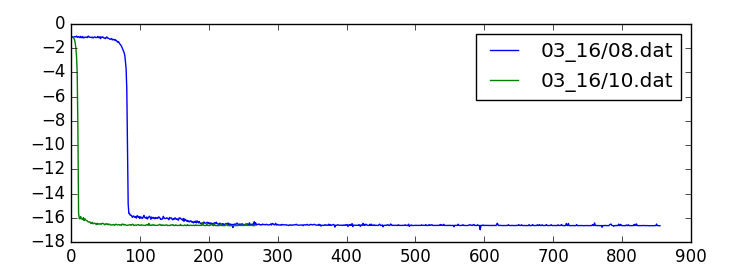
Above is a plot of average energy versus optimization steps. The blue line and green line correspond to the performances before and after implementing the ADADELTA algorithm, respectively.
Acoustic Emission during Basalt Deformation
This project is conducted under the supervision of Professor Karin Dahmen. Acoustic emissions (AE) are sound waves emitted when a material is deformed. These "cracking sounds" can provide information of the local deformation events inside a solid. Professor Dahmen has a general theory that predicts a statistical distribution of the magnitudes versus the frequencies of the events. My goal was to extract the magnitudes from the experimental data and see if her theory applies to basalt deformation. The practical difficulty is that the waveforms of AEs are noisy and the amplitudes of the sound wave are sometimes comparable with noise. In addition, the sensors were placed on the surface of the solid, so the dissipation during propagation inside the solid need to be considered. After all the calibrations a power law distribution was identified, but we then realized that the fact might be known to the seismology field already. A typical waveform is shown below. (Signal amplitude versus time)
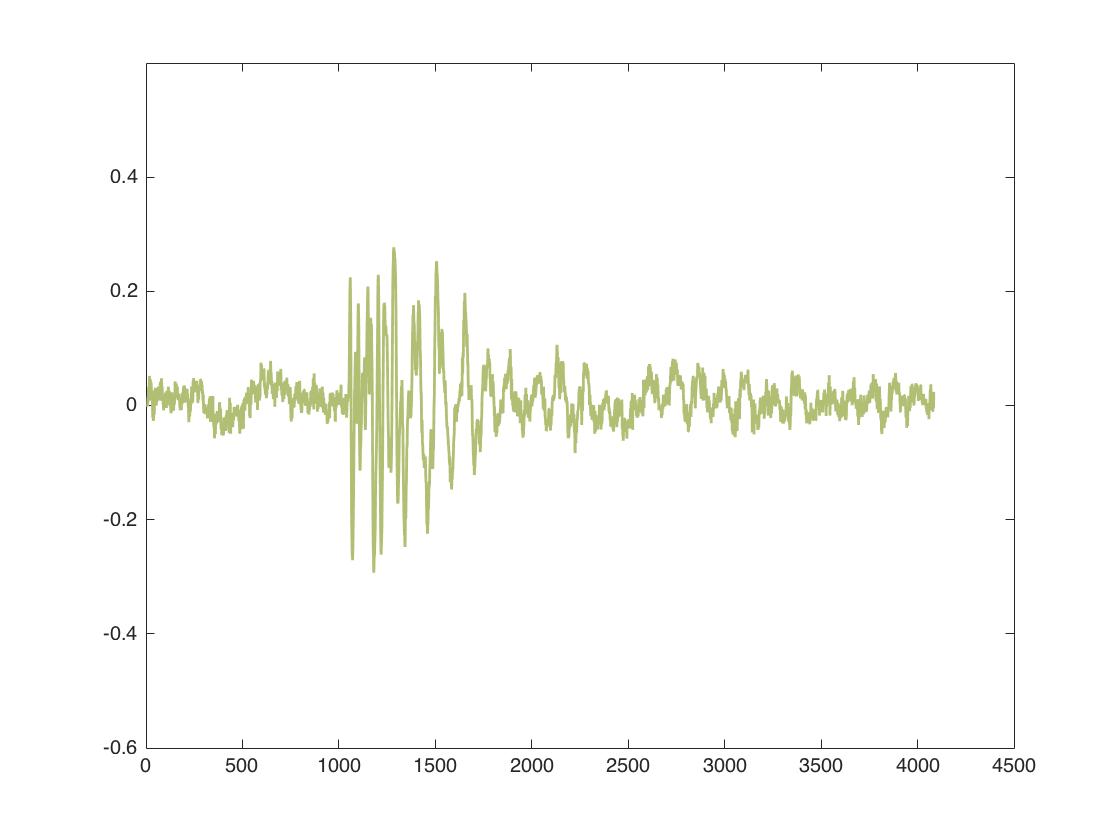
Even Earlier...
I've measured the orbital parameters of an asteroid; I've made "artificial muscles" with fish lines; I've built a chaotic circuit... Those old projects dated way back to my highschool life are mainly due to a contest called IYPT. I've enjoyed an incredible set of table-top experiments introduced by this contest. They are really fun!
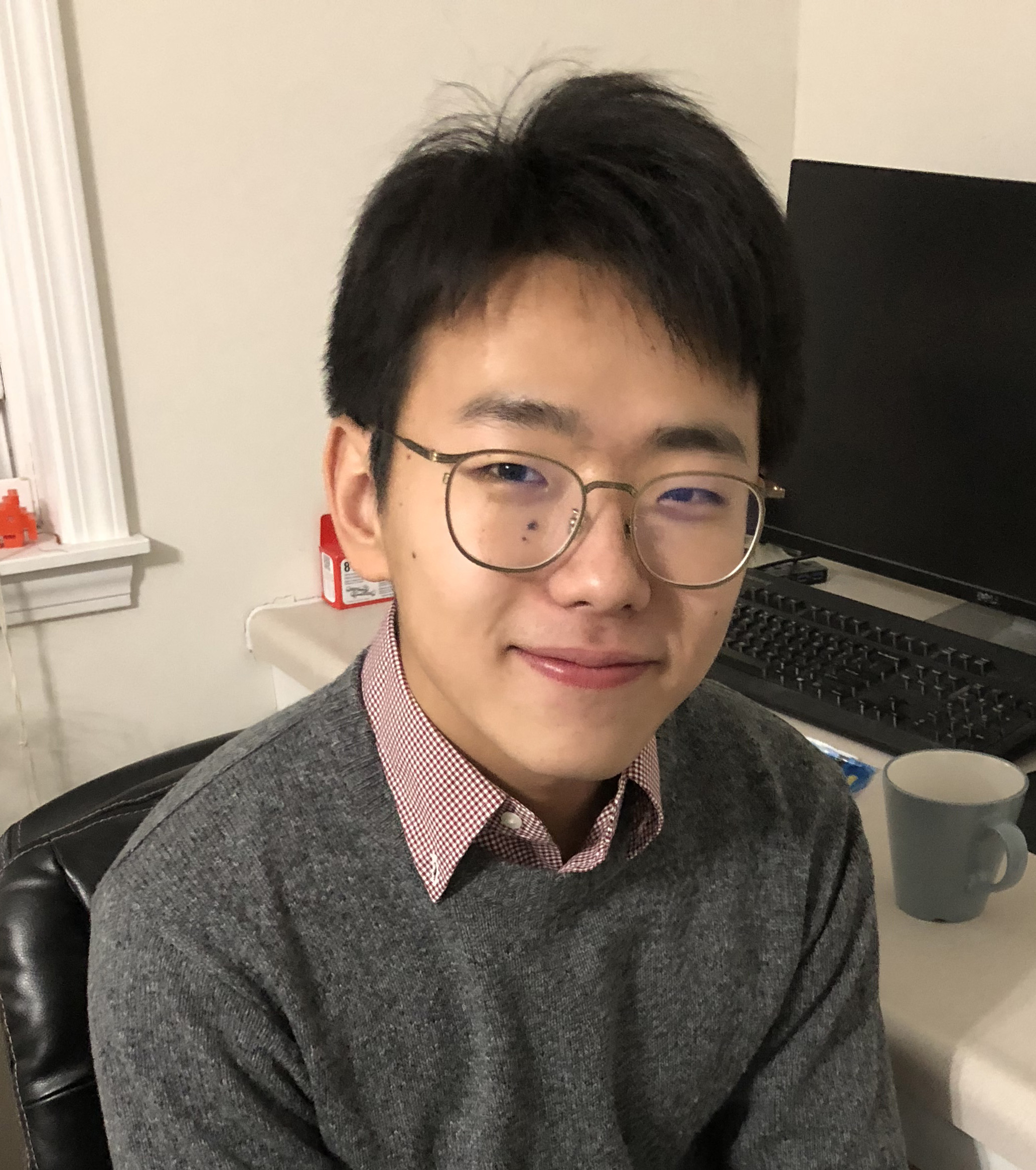
Department of Physics
University of Illinois at Urbana-Champaign
1110 West
Green Street
Urbana, IL 61801-3003
Copyright © 2018 Zhiru Liu